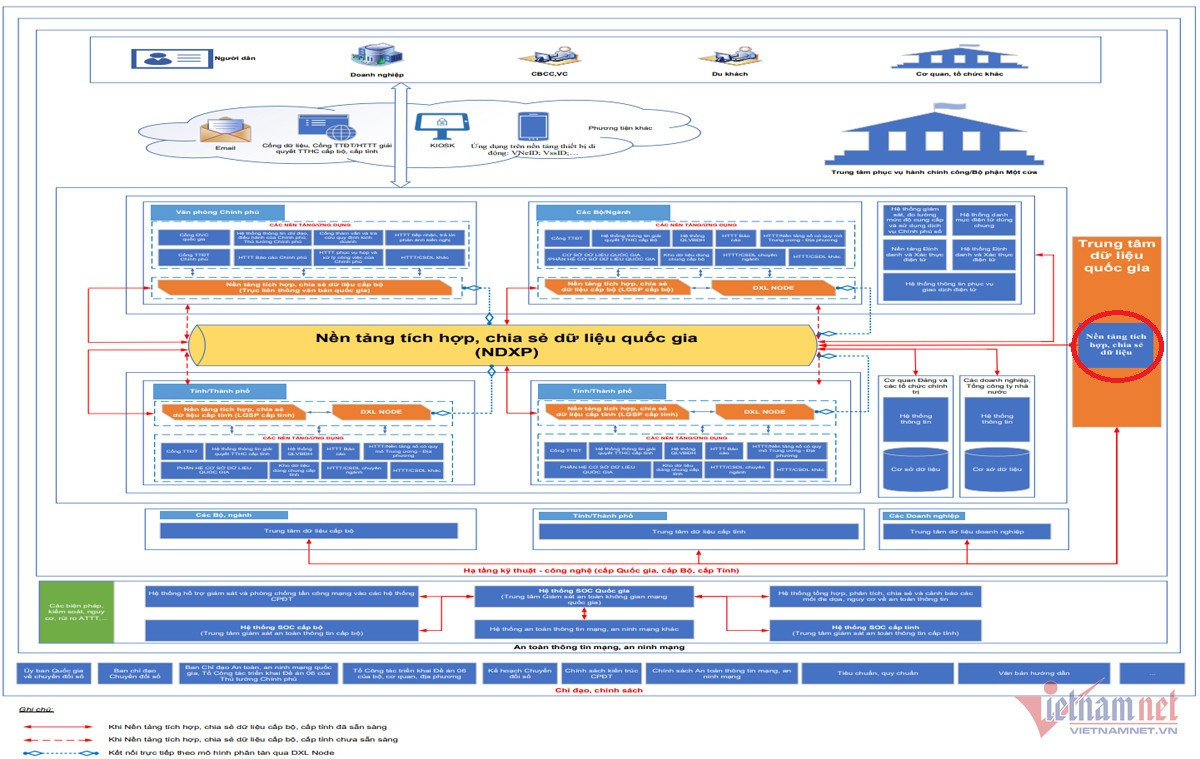Initially introduced at the end of 2023, the framework provides a comprehensive overview that illustrates the components and relationships within an e-government system moving towards full digital government. This framework serves as a guide for ministries, agencies, and local governments to develop their own e-government architectures.
The goal is to implement an integrated and uniform e-government system across central and local levels, enhancing data connectivity, resource sharing, and IT coordination both within government agencies and between government and other organizations nationwide.

A significant update in Version 3.0 compared to Version 2.0 is the inclusion of the National Data Center, which consolidates data on citizens and aggregates national databases. This aligns with the government-approved 2023 Resolution 175 and the “National Data Center Project.”
Recently, the MIC adjusted and supplemented Version 3.0 to align with the ongoing implementation of the “National Data Center Project.” One notable change is renaming the “National Data Center Data Integration and Sharing Platform” to the “National Data Center Data Sharing and Coordination Platform.”
Additionally, the platform's regulatory framework has been revised to reflect its expanded role in coordinating data sharing.
The national data-sharing platform, led by the MIC, aims to integrate and facilitate data exchange between information systems and databases across ministries, sectors, and localities through centralized and direct connection models.
Systems and databases managed by the National Data Center are interconnected and integrated using the data-sharing and coordination platform of the center.

Prime Minister Pham Minh Chinh highlighted progress in data development and connectivity during a mid-July 2024 conference with government leaders and local authorities. National and specialized databases, such as those on citizens, taxes, insurance, businesses, and education, have been significantly advanced, leading to positive results.
The National Committee on Digital Transformation reported that before 2020, only the national business database was operational. By 2024, core national databases, including those on citizens, businesses, and insurance, have been completed, with other databases nearing completion.
Before 2020, data implementation across government bodies was fragmented. By 2024, most ministries, sectors, and localities had clearly defined and published shared database lists, totaling nearly 3,000 databases.
As of September 2024, ten localities - including Hai Duong, Son La, Ha Giang, Lang Son, Nghe An, Ninh Thuan, Thua Thien Hue, Yen Bai, Ha Nam, and Dak Lak - have adopted plans for implementing the national data strategy through 2030.
In 2020, the total number of data-sharing transactions through the national data-sharing platform was 11.5 million. By mid-July 2024, this figure had surged to 2.3 billion cumulative transactions, with 95 connection points from various agencies and entities nationwide.
Van Anh